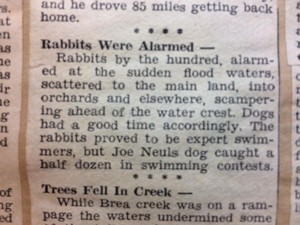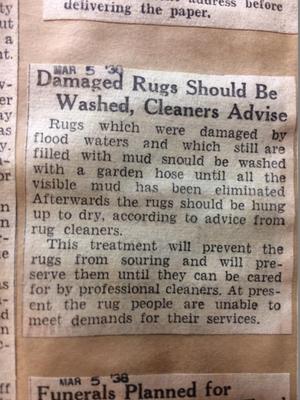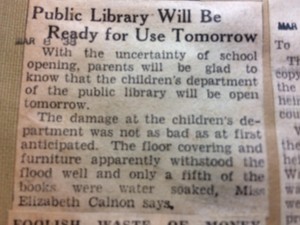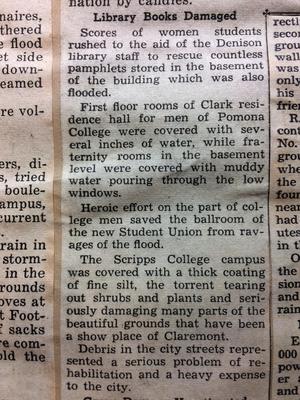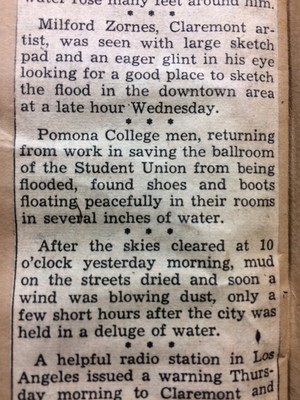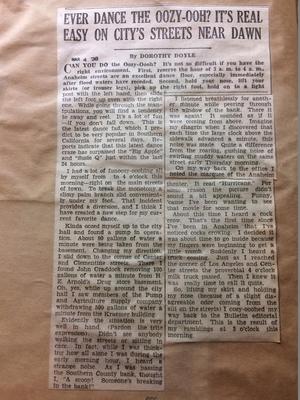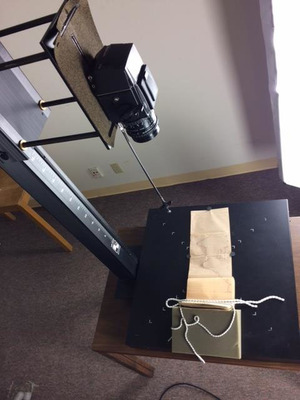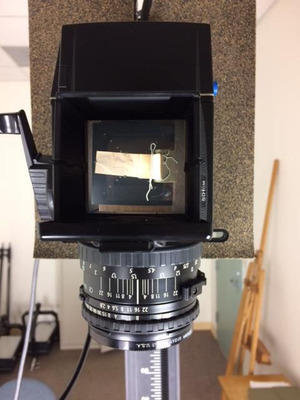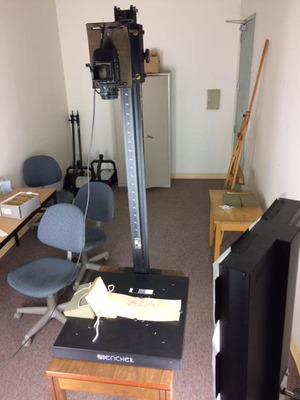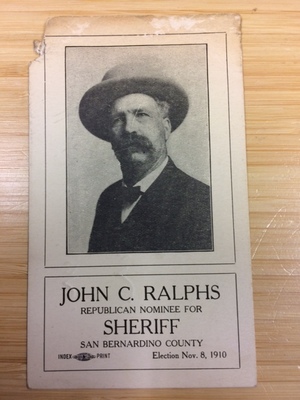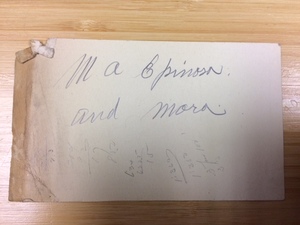Hello! This week I’ve been busy collecting more metadata, and I’ve come across some very interesting lines in the documents I’ve been looking at. Both letters are from C.N. Perry to H.T. Cory, and Perry has quite the flair for poetic language and a dry wit (pun very much intended). In the first letter Perry tells Cory how he was unaware of the business dealings in the Los Angeles office, and how Cory’s letter made him aware of the “whole scheme.” Perry clarifies that he doesn’t mean the “actual dirt moving and structure building,” which he has a “vivid recollection” of, but another kind of dirt about the “inside workings” in Los Angeles which altered what was happening on the ground. In a moment of admirable symbolism production, Perry says that “the real strings, which, when pulled, made us puppets dance.” Poetic, deep, and just a little angry at the business institutions which have so much control over projects on the ground. Perry’s anger is once again expressed, when he ends his next letter to Cory with the statement “I will refrain from indulging my propensity for growling,” though the growling is not directed at Cory but at the lack of attention he feels is being expressed about conditions at the Alamo Channel. Be free, Perry, and growl away.
That’s So Meta
Congratulations on reaching Thursday readers! This week I learned how to collect metadata. “That’s so meta,” you may be murmuring, and you would be correct. Metadata is data on data – how’s that for being meta? Metadata is important because it gives us information about the data that makes the documents we’ve digitized more accessible and easier for researchers to sort through. To collect metadata, we look at each document and record certain pieces of information about it, including its title, a brief description of its content, its contributors, recipients, the language it is in, and the dates referenced in the document. We also include the subject for each document, words that capture what the document describes and includes, like “dams” or “floods.” This way researchers who are interested in floods, for example, will have a much easier time finding the document than if it didn’t include that subject. Since I started the process this week I still have a long way to go before getting through all the documents, but it will happen, drop by drop, trickle by trickle.
The Flood of 1938
Hi
folks! This week I took a detour from field note scanning to digitize a bound
collection of 1938 newspaper clippings. Or, as it is concisely titled:
“Flood, March 1938 : newspaper clippings from
Anaheim, Azusa, Brea, Chino, Claremont, Corona, El Monte, Glendora, Hollywood,
North Hollywood, Long Beach, Los Angeles, Monrovia, Ontario, Orange, Pasadena,
Pomona, Redlands, Riverside, San Bernardino, Santa Ana, Santa Monica, Torrance,
Tujunga, Upland ; with photos. of San Antonio Creek and the Claremont area“
The
volume contains articles detailing a flood that devastated the Inland Empire in
March 1938. For the most part the stories are what you’d expect from newspapers
reporting major natural disasters: government response, relief efforts, property damage, lives
lost, rabbits…
The clippings
touch on a striking variety of ways in which daily life was impacted by the flood.
Pieces abound stressing the importance of boiling water so it’s safe to drink. There’s
a lost and found notice about a heifer. Advice about caring for wet rugs…
…And grand pianos:
A report
about a public library whose children’s department suffered “only” a fifth of
its books being soaked:
The
Denison library of Scripps College was less fortunate:
Scattered
among the bigger stories are vignettes painting a vivid picture of the flood:
I’ll close
by sharing a piece by Dorothy Doyle, because there’s really no other way to
close this. See you next time!
Normal
0
false
false
false
EN-US
X-NONE
X-NONE
/* Style Definitions */
table.MsoNormalTable
{mso-style-name:”Table Normal”;
mso-tstyle-rowband-size:0;
mso-tstyle-colband-size:0;
mso-style-noshow:yes;
mso-style-priority:99;
mso-style-parent:””;
mso-padding-alt:0in 5.4pt 0in 5.4pt;
mso-para-margin-top:0in;
mso-para-margin-right:0in;
mso-para-margin-bottom:10.0pt;
mso-para-margin-left:0in;
line-height:115%;
mso-pagination:widow-orphan;
font-size:11.0pt;
font-family:”Calibri”,”sans-serif”;
mso-ascii-font-family:Calibri;
mso-ascii-theme-font:minor-latin;
mso-hansi-font-family:Calibri;
mso-hansi-theme-font:minor-latin;}
Go Back and Look At It Again
Hello all!
During my
time here at CCEPS, I have come across several documents that have been of
interest to me. Today, I would like to share more about one of my favorite
documents that has taught me about an event in southern Californian history
that I didn’t know about until yesterday. While working on metadata for the Imperial
Valley Records items I have scanned, I revisited the following document: “Letter
to N. W. Stowell of California Development Company from Thos. L. Woolwine.”
Stowell inquired with Woolwine about representation in the case of California
Development Company vs. the Imperial Land Company. To better understand what
this court case was talking about, I did a little research.
In previous
posts, I have talked about the Salton Sea in relation to the development of the
All-American Canal in the Imperial Valley. This canal was not, however, the
first in the region. At the turn of the century, the California Development
Company (previously known as the Colorado River Irrigation Company) built the
Alamo/Imperial Canal, which was to irrigate and provide water for the farming
communities in the Imperial and Coachella Valleys by diverting water from the
Colorado River. The Salton Sink area (what we know now as the Salton Sea) was
fertile for a short time. After heavy rains caused the Colorado River to
overflow, this higher influx of water brought more silt through the Imperial
Canal and caused blockage. This blockage led to dikes breaking, canals
overflowing, and an infrastructure disaster that completely altered the course
of history for the Imperial and Coachella Valleys. Massive flooding destroyed
farms, submerged a town, and changed the environmental face of the Salton area.
The silt from the Colorado River poured into the Salton Sink area and
eventually formed what we now call the Salton Sea. The California Development Company
faced several lawsuits from farmers and other land companies in the area and
eventually went bankrupt. In 1911, the Imperial Irrigation District formed
through a collective of farmers and local citizens, and from this year forward,
this organization managed the development of water infrastructure in the area. With
the context of this incident in mind, this helps explain some of the fears facilitating
the creation of the All-American Canal. The aggressive advertising, including
xenophobia against Mexico, and calls to rally around the support of the
financing bills in Congress have a historical context with this in mind. Citizens
of the Imperial and Coachella Valleys needed water, but they needed the canal
to be built to combat flooding.
The
documents tell a story, especially when placed in conversation with each other.
By digitizing these documents, hopefully other archives patrons will be able to
read through the documents I have had the pleasure of looking over while
digitizing.
Normal
0
false
false
false
EN-US
X-NONE
X-NONE
/* Style Definitions */
table.MsoNormalTable
{mso-style-name:”Table Normal”;
mso-tstyle-rowband-size:0;
mso-tstyle-colband-size:0;
mso-style-noshow:yes;
mso-style-priority:99;
mso-style-parent:””;
mso-padding-alt:0in 5.4pt 0in 5.4pt;
mso-para-margin-top:0in;
mso-para-margin-right:0in;
mso-para-margin-bottom:10.0pt;
mso-para-margin-left:0in;
line-height:115%;
mso-pagination:widow-orphan;
font-size:11.0pt;
font-family:”Calibri”,”sans-serif”;
mso-ascii-font-family:Calibri;
mso-ascii-theme-font:minor-latin;
mso-hansi-font-family:Calibri;
mso-hansi-theme-font:minor-latin;}
Adventures in Book Scanning
Happy Friday! This week I learned how to use a new piece of equipment – the book scanner. The reason we had to use the book scanner was that one of the documents had pages that were bound to each other with a string of sorts, and may also have been glued together, and taking the pages apart might have damaged them. This is where the book scanner comes in – the magical device scans books from above, so unlike a regular scanner, the pages don’t have to be pressed between the device to be scanned. The book can be laid out normally, as if it’s being read, and the scanner basically takes a picture of it from the top that’s then transferred to the computer. I was surprised at how mostly simple it is to use, and even more surprised that using it seems to be faster than using the regular scanner. The only step that’s been harder than the regular scanner so far has been having to redraw the cropping window for each page, but that’s pretty minor. Look how good of a job it does! Happy weekend, and as always, drink your water.
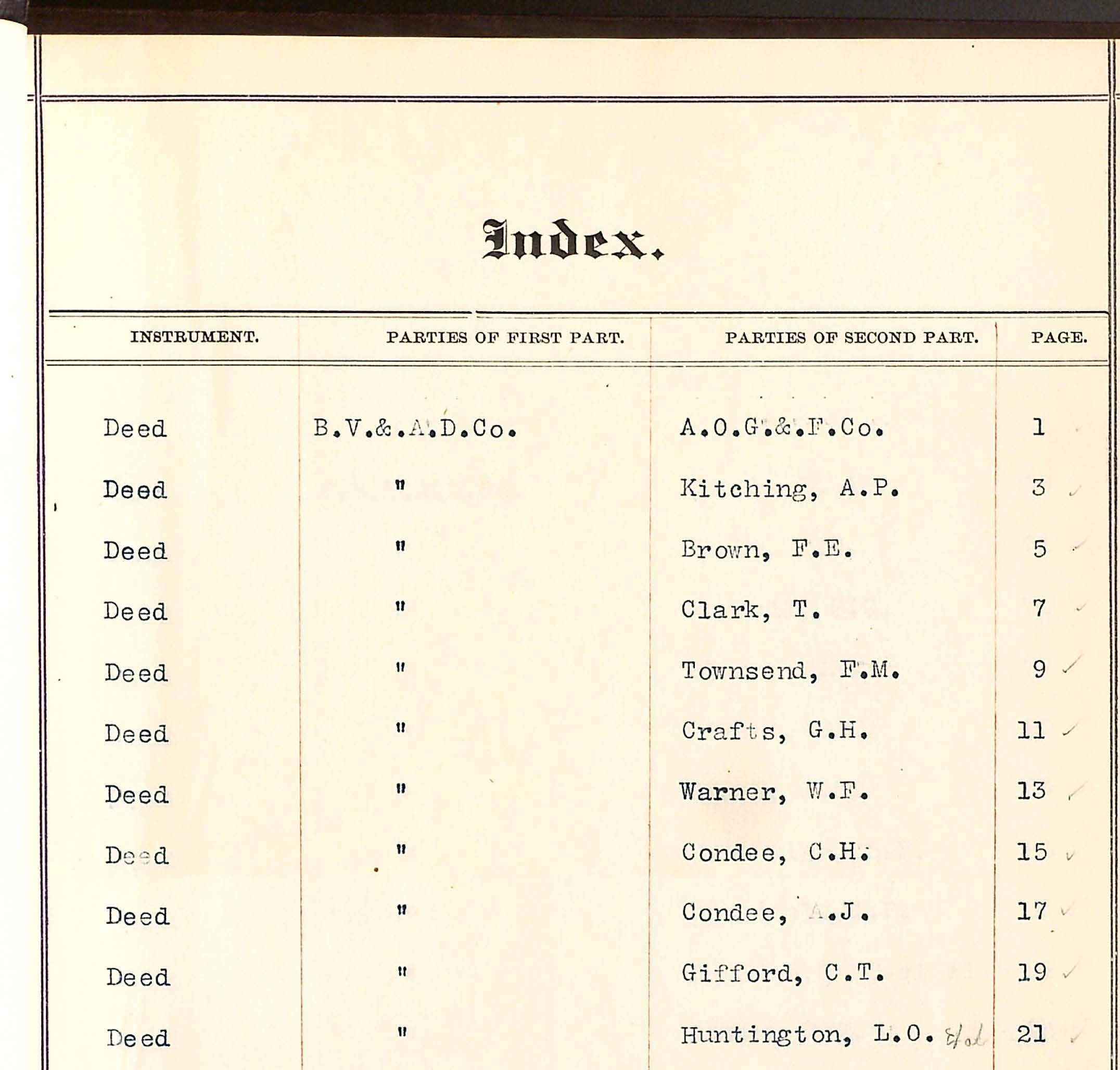
Metadata Mania
Hello again
all!
This week I
have started working on metadata, which as some of my coworkers have explained
in the past, refers to subject terms and descriptive information about the
digitized items. Metadata is important in digital archives because it allows
patrons to find what they’re looking for with relative ease! Without metadata, users
would have to spend more time looking for primary sources relevant to their
research topic. Some items might be overlooked because they are too obscure or
simply become lost in the oversaturation of items.
As this is
my first day working on metadata, I am rather slow at putting all of the
information into an excel spreadsheet. As time passes and I become more
familiar with the Library of Congress subject headings that are relevant to the
California Water Documents Collection, I suspect I will be able to complete the
metadata faster.
One step I
am looking forward to with the metadata process is working with geospatial
information. We will eventually be working with the library’s resident GIS
experts in order to input geographical information into the metadata. First, we
plan on filtering the documents through text mining software to pull out
geographic information. Whenever a document cites a location such as the Salton
Sea, the text mining software will add that to a pool of locations, which we
can then translate into latitude and longitude coordinates. From there,
researchers will be able to use the metadata we provide in order to make maps
with GIS.
I am happy
to begin learning more about the next phase of the digitization process with
these water documents. As a researcher myself, I know how important it is to
find everything relevant to a research topic–you do not want to be told you
missed something that could have been helpful. Thus, as I create the metadata,
my goal is to be as thorough as possible while also still being efficient.
Until next
time!
Normal
0
false
false
false
EN-US
X-NONE
X-NONE
/* Style Definitions */
table.MsoNormalTable
{mso-style-name:”Table Normal”;
mso-tstyle-rowband-size:0;
mso-tstyle-colband-size:0;
mso-style-noshow:yes;
mso-style-priority:99;
mso-style-parent:””;
mso-padding-alt:0in 5.4pt 0in 5.4pt;
mso-para-margin-top:0in;
mso-para-margin-right:0in;
mso-para-margin-bottom:10.0pt;
mso-para-margin-left:0in;
line-height:115%;
mso-pagination:widow-orphan;
font-size:11.0pt;
font-family:”Calibri”,”sans-serif”;
mso-ascii-font-family:Calibri;
mso-ascii-theme-font:minor-latin;
mso-hansi-font-family:Calibri;
mso-hansi-theme-font:minor-latin;}
Normal
0
false
false
false
EN-US
X-NONE
X-NONE
/* Style Definitions */
table.MsoNormalTable
{mso-style-name:”Table Normal”;
mso-tstyle-rowband-size:0;
mso-tstyle-colband-size:0;
mso-style-noshow:yes;
mso-style-priority:99;
mso-style-parent:””;
mso-padding-alt:0in 5.4pt 0in 5.4pt;
mso-para-margin-top:0in;
mso-para-margin-right:0in;
mso-para-margin-bottom:10.0pt;
mso-para-margin-left:0in;
line-height:115%;
mso-pagination:widow-orphan;
font-size:11.0pt;
font-family:”Calibri”,”sans-serif”;
mso-ascii-font-family:Calibri;
mso-ascii-theme-font:minor-latin;
mso-hansi-font-family:Calibri;
mso-hansi-theme-font:minor-latin;}
Camera Room 2: Camera Room Harder
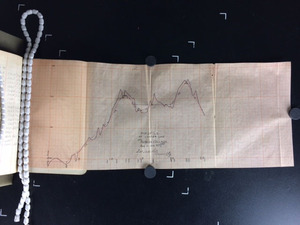 Hi
Hi
folks! This week I made a brief visit to the fabled camera room
to photograph a centerline profile. No tripod
this time, however. The graph paper’s attached to a field notebook and thus too
heavy to prop up on a magnetic whiteboard, so I used an overhead rig.
Normal
0
false
false
false
EN-US
X-NONE
X-NONE
/* Style Definitions */
table.MsoNormalTable
{mso-style-name:”Table Normal”;
mso-tstyle-rowband-size:0;
mso-tstyle-colband-size:0;
mso-style-noshow:yes;
mso-style-priority:99;
mso-style-parent:””;
mso-padding-alt:0in 5.4pt 0in 5.4pt;
mso-para-margin-top:0in;
mso-para-margin-right:0in;
mso-para-margin-bottom:10.0pt;
mso-para-margin-left:0in;
line-height:115%;
mso-pagination:widow-orphan;
font-size:11.0pt;
font-family:”Calibri”,”sans-serif”;
mso-ascii-font-family:Calibri;
mso-ascii-theme-font:minor-latin;
mso-hansi-font-family:Calibri;
mso-hansi-theme-font:minor-latin;}
Normal
0
false
false
false
EN-US
X-NONE
X-NONE
/* Style Definitions */
table.MsoNormalTable
{mso-style-name:”Table Normal”;
mso-tstyle-rowband-size:0;
mso-tstyle-colband-size:0;
mso-style-noshow:yes;
mso-style-priority:99;
mso-style-parent:””;
mso-padding-alt:0in 5.4pt 0in 5.4pt;
mso-para-margin-top:0in;
mso-para-margin-right:0in;
mso-para-margin-bottom:10.0pt;
mso-para-margin-left:0in;
line-height:115%;
mso-pagination:widow-orphan;
font-size:11.0pt;
font-family:”Calibri”,”sans-serif”;
mso-ascii-font-family:Calibri;
mso-ascii-theme-font:minor-latin;
mso-hansi-font-family:Calibri;
mso-hansi-theme-font:minor-latin;}
Blog Entry 010; A Meta Upload
Hey! Today marks my last day as a CCEPS Fellow and the experience that I have gained in this fellowship is priceless. Learning and being a part of the process of digital surrogates has been very tedious but definitely necessary. That is one of the reasons why I like this blog so much. It is one of the perfect opportunities for more people to know more “behind the scenes” of things that seem to be easy. Creating a digital surrogate is not as easy as it sounds. Each detail is vital to the accessibility of the resource. Although the work turned out to be more arduous than I expected, I am so thankful that I got to learn so much more about it.
Learn As We Go
Hello again all!

Of Big Mustaches and Small Rocks
Hiya, folks! This week in the exciting world of Willis Jones field notebook scanning: A photograph! Of a person!
This particular human is one John C. Ralphs (1852-1931), who as the card notes ran for San Bernardino County sheriff in 1910. I take it he won, because according to a San Bernardino County Sun article about local civic leaders, Ralphs served as sheriff from 1903 to 1915. The article also describes Ralphs as a “big, powerful man, standing well over six feet tall in his boots, weighing better than 200 pounds and sporting a big handlebar mustache.” It was, as the photograph clearly attests, a mustache worthy of note.
My five minutes of Internet research also found that Ralphs instituted a policy known as the “hobo rock pile.” According to the Inland Valley Daily Bulletin, “all misdemeanor prisoners — mostly itinerant visitors to the county — were assigned to work on the county’s rock pile, making little rocks out of big ones.” And make little rocks they did, because eventually the county ran out of rocks for prisoners to smash (what’d the county do with all those rocks?). Chairman J.B. Glover was then authorized by the Board of Supervisors “to purchase 100 tons of rocks to keep the county’s prisoners from being idle.”
So, okay.
I’m not sure what Jones made of any of this, or why Ralphs’s election card was in his notebook. Maybe Jones used the photo as an impromptu bookmark. Maybe he had an interest in tiny rocks. Truth be told, I have a difficult time reading Jones’s handwriting, so for all I know these notebooks could be filled with all sorts of commentary about small rocks and the larger rocks whence they came. I’ll close this meandering post with one more loose end: the backside of the photograph.
Not sure what it says, dunno what it means.
Citations:
Joe Blackstock, “Weird news has been going on for years in Inland Valley,” Inland Valley Daily Bulletin. January 02, 2017. http://www.dailybulletin.com/general-news/20170102/weird-news-has-been-going-on-for-years-in-inland-valley
Nick Cataldo, “A great city like San Bernardino needs great leaders.” San Bernardino County Sun. November 11, 2013. http://www.sbsun.com/20131111/a-great-city-like-san-bernardino-needs-great-leaders

